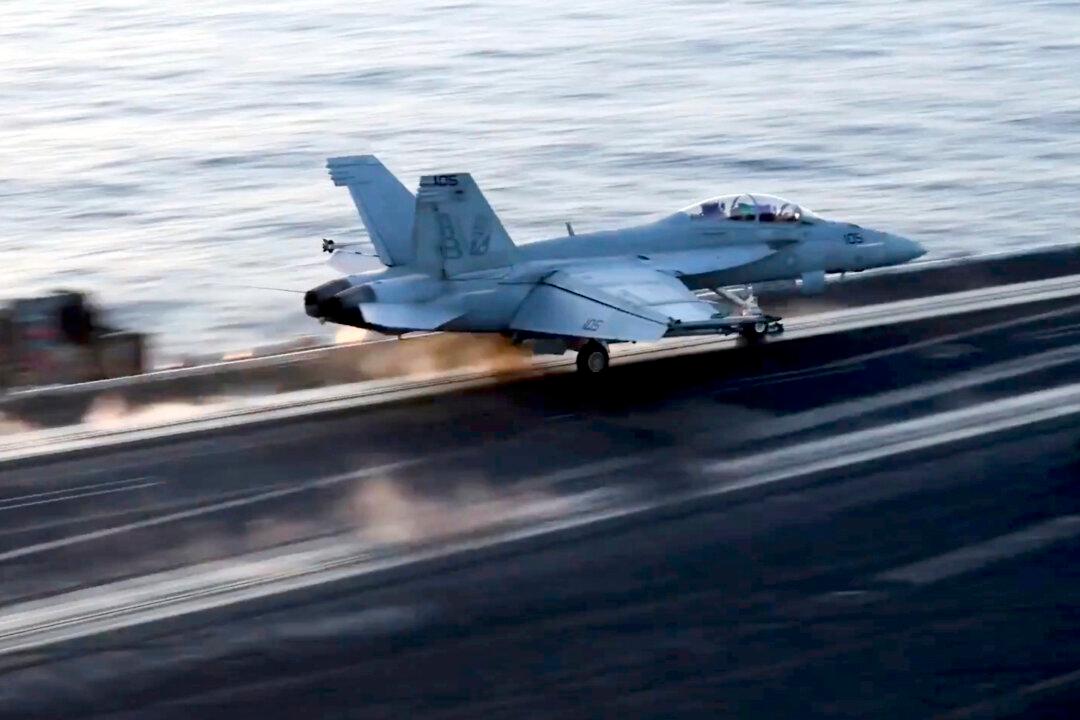A Navy fighter jet went overboard while attempting to land on the aircraft carrier USS Harry S. Truman on May 6, the second time in a little more than a week that the carrier has lost a fighter overboard while operating in the Red Sea.
In an emailed press statement, a defense official confirmed to The Epoch Times that the F/A-18F Super Hornet jet, assigned to Strike Fighter Squadron 11, was landing on the carrier when the ship’s aircraft arresting system failed and the aircraft went overboard.





